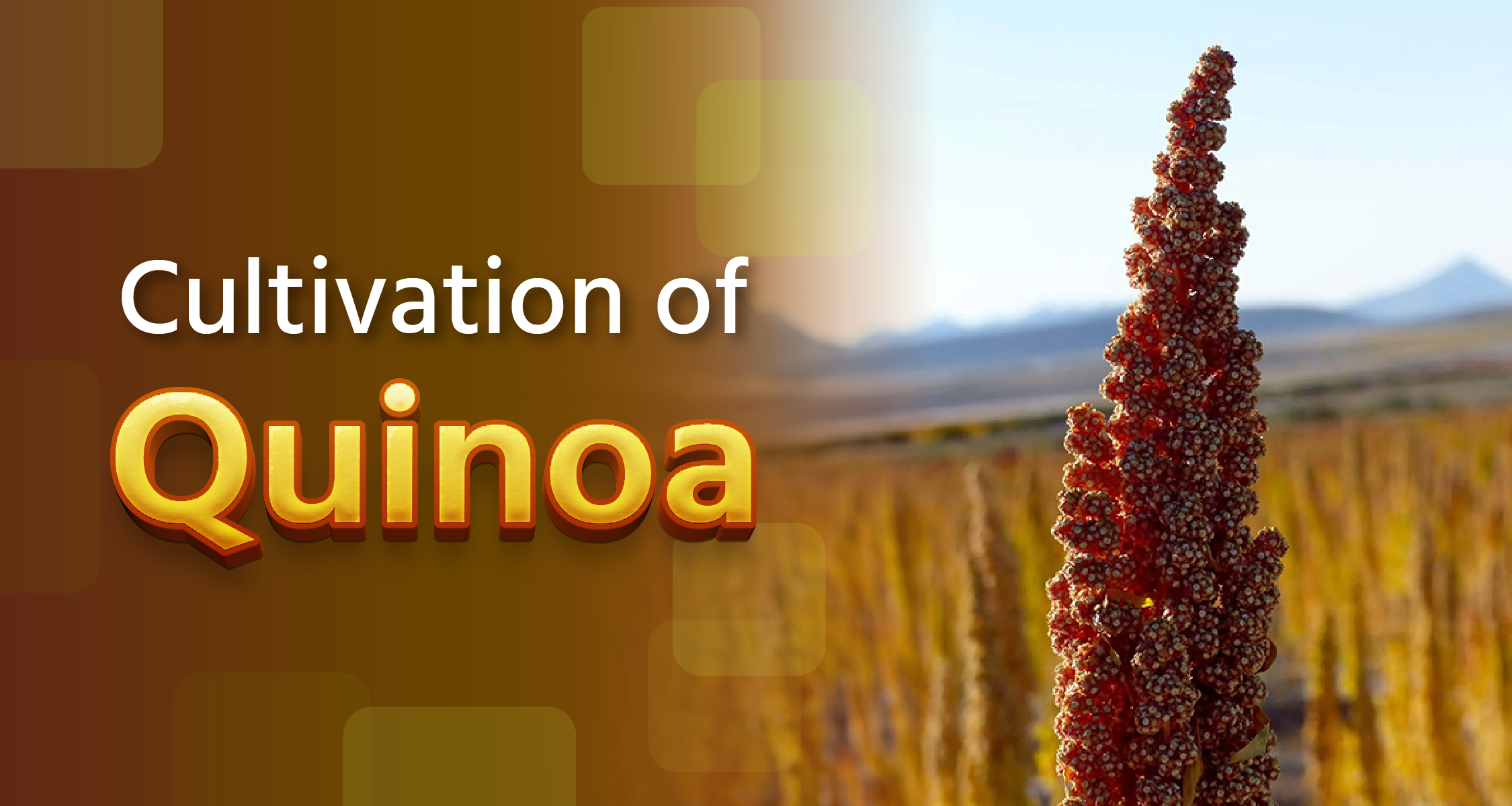Cultivation of Quinoa

Quinoa is a plant grown for its protein-rich seeds. It grows to a height of about 1 to 1.5 meters. It is an annual plant and is used as an alternative to rice. Quinoa seeds are highly rich in protein, and the future of its commercial cultivation in India is bright. Additionally, quinoa is used in soap, shampoo, and food products.
How to Cultivate Quinoa?
- Soil: The most suitable soil for quinoa is sandy loam. Avoid heavy clay soils as they are not ideal. Choose soil with good drainage, a moderate slope, and average nutrients. Quinoa can thrive in soils with a pH ranging from acidic 4.8 to alkaline 8.5.
- Climate: The ideal temperature for quinoa cultivation is around 18°C to 20°C. It can withstand temperatures ranging from a maximum of 39°C to a minimum of -8°C. A cool climate is suitable for optimal yield, with quinoa being grown on short days and in cool weather.
- Sowing Time: In the Indian climate, quinoa is sown from November to March. This period is ideal due to the sufficient cold and fertile weather conducive to quinoa plant growth.
- Seed Quantity and Treatment: Approximately 500 to 750 grams of seed per acre are required for quinoa cultivation. Seeds can be treated by soaking in cow urine for 24 hours to protect them from diseases during the process.
- Sowing Method: Prepare rows in the field with a 1-foot distance between them. Plant the seeds at a distance of 15 centimeters within the rows. This ensures the plants grow tall and stable. Seeds can be sown using the drill method, where locally available seeds can be purchased. The broadcast method can also be used, requiring fewer seeds.
- Fertilizer Management: Conduct a thorough soil test before sowing. Mix 6-8 tons of well-decomposed cow dung per acre into the soil 10-15 days before sowing. Use 70 kilograms of urea, 100 kilograms of DAP, and 40 kilograms of MOP fertilizers per acre. Apply urea in two split doses to enhance crop growth.
- Irrigation Management: Quinoa is known for its ability to grow well with limited water availability. According to scientists, quinoa shows only an 18-20% yield reduction with 50% less water availability. Excessive irrigation increases the risk of pests and diseases. Therefore, irrigate immediately after sowing.
- Weed Management: Remove weeds from young plants to prevent damage. Once plants develop adequately, weeds pose no threat.
- Disease and Pest Management: Quinoa has good resistance to diseases and pests. It can also withstand frost and drought. No significant pest-related economic losses have been reported in quinoa.
- Harvesting: Quinoa typically matures in about 100 days, reaching a height of approximately 4-5 feet with seeds resembling sorghum. When ripe, the crop turns yellow or red, and leaves fall off. Harvest immediately after ripening to avoid sprouting, especially during rainfall. Rub the panicles by hand to easily separate the seeds.
- Storage: For storage, thresh the harvested panicles and separate the seeds using a fanning mill. Remove the outer saponin layer, which can be harmful to health.
Benefits of Quinoa
- Quinoa is highly nutritious and contains various nutrients such as protein, fiber, vitamins, and minerals.
- It is lactose-free and suitable for those with lactose intolerance.
- Quinoa is an excellent source of protein, especially for individuals who do not consume non-vegetarian diets.
- It is rich in antioxidants, which help protect the body from various diseases.
- Quinoa has a low glycemic index, making it suitable for diabetics.
- It contains more fiber than other grains, improving digestion and aiding in weight management.
- Quinoa is also rich in magnesium and other minerals such as calcium, iron, and zinc, essential for overall health.
- Regular consumption of quinoa promotes metabolic health and helps maintain well-being as one age.
- Quinoa aids in weight management by reducing hunger and providing sustained energy throughout the day.
Do you cultivate quinoa? Share your answer and experience with us in the comments. For more interesting and important information like this, follow the 'Krishi Gyan' channel now. And if you liked this post, don't forget to like and share it with your farmer friends.
Frequently Asked Questions (FAQs)
Q: Why is quinoa called a superfood or super grain?
A: Quinoa is called a superfood or super grain because it contains a abundant nutrients, such as protein, carbohydrates, vitamins, and minerals, which are highly beneficial to the body. Its seeds are rich in minerals like calcium, magnesium, iron, zinc, and manganese, which help manage various health issues. Additionally, quinoa possesses medicinal properties that assist in combating various diseases. For these reasons, it is considered a superfood or super grain.
Q: When is quinoa sown?
A: For optimal yields, quinoa should be sown between mid-October and the end of November.
Q: How long does it take for quinoa to harvest?
A: Quinoa plants are ready for harvest approximately 100-110 days after sowing, similar to mustard crops.
Please login to continue

Get free advice from a crop doctor
